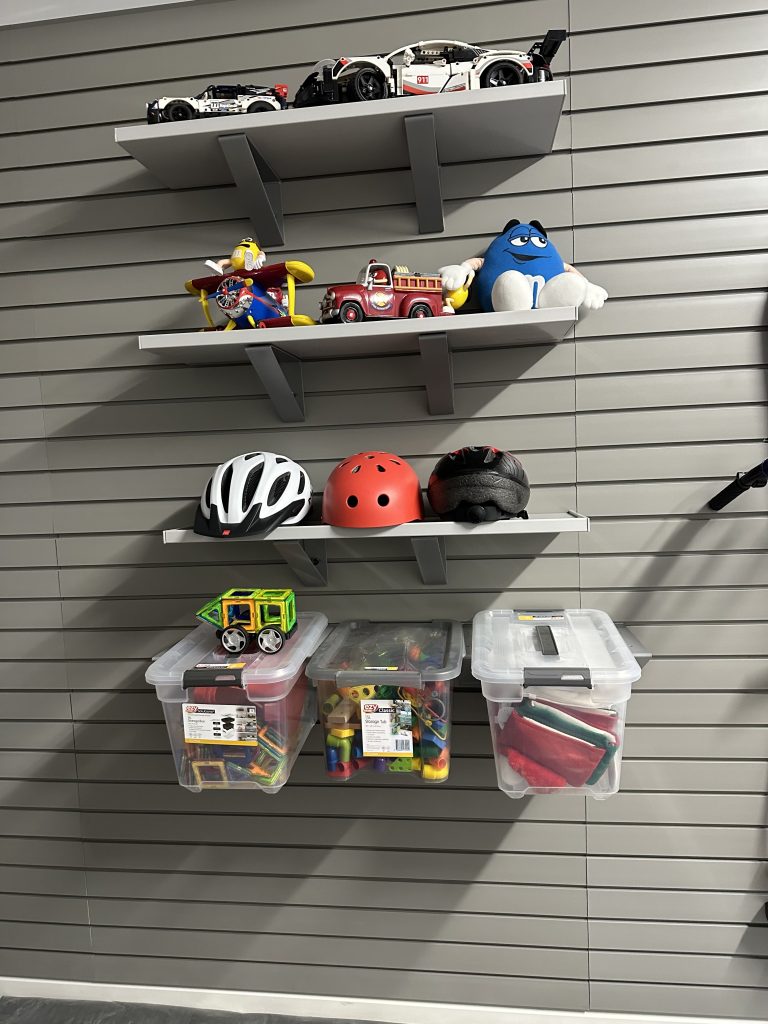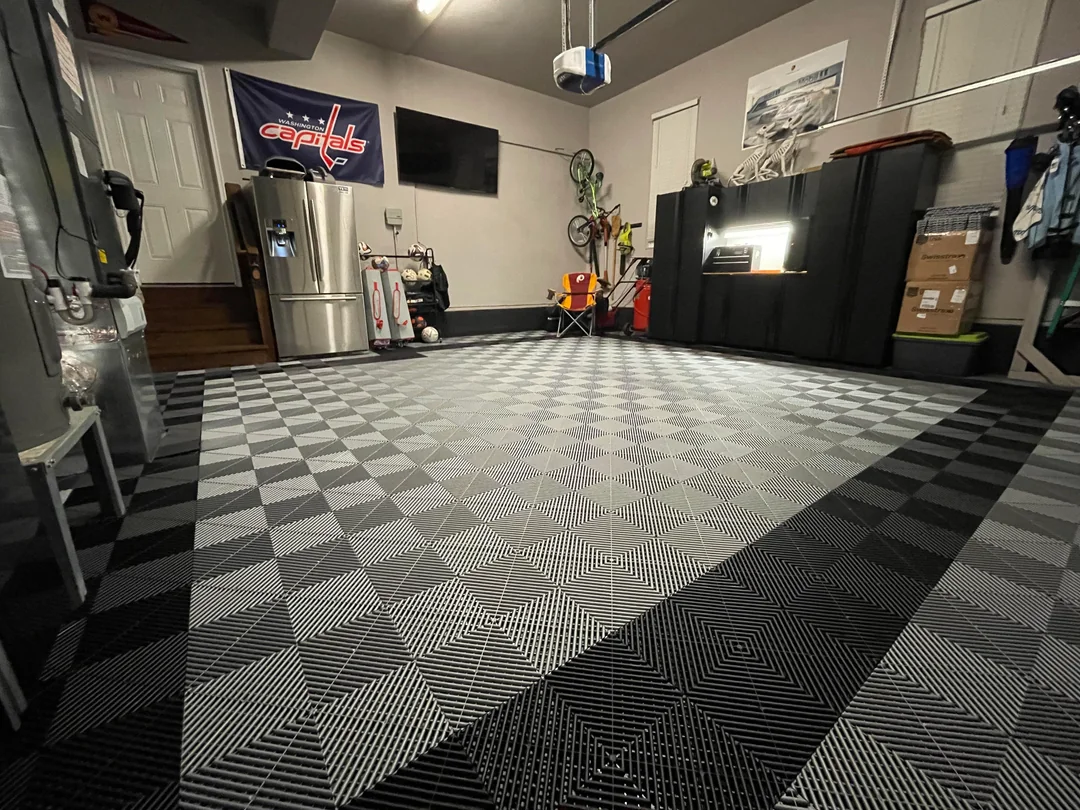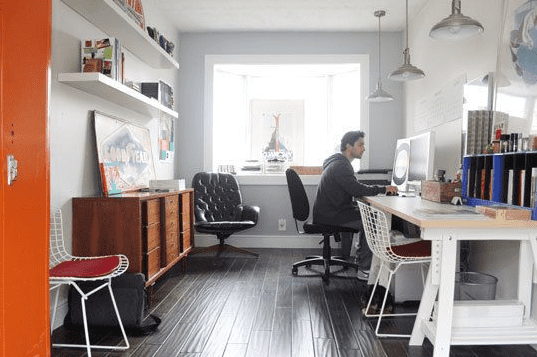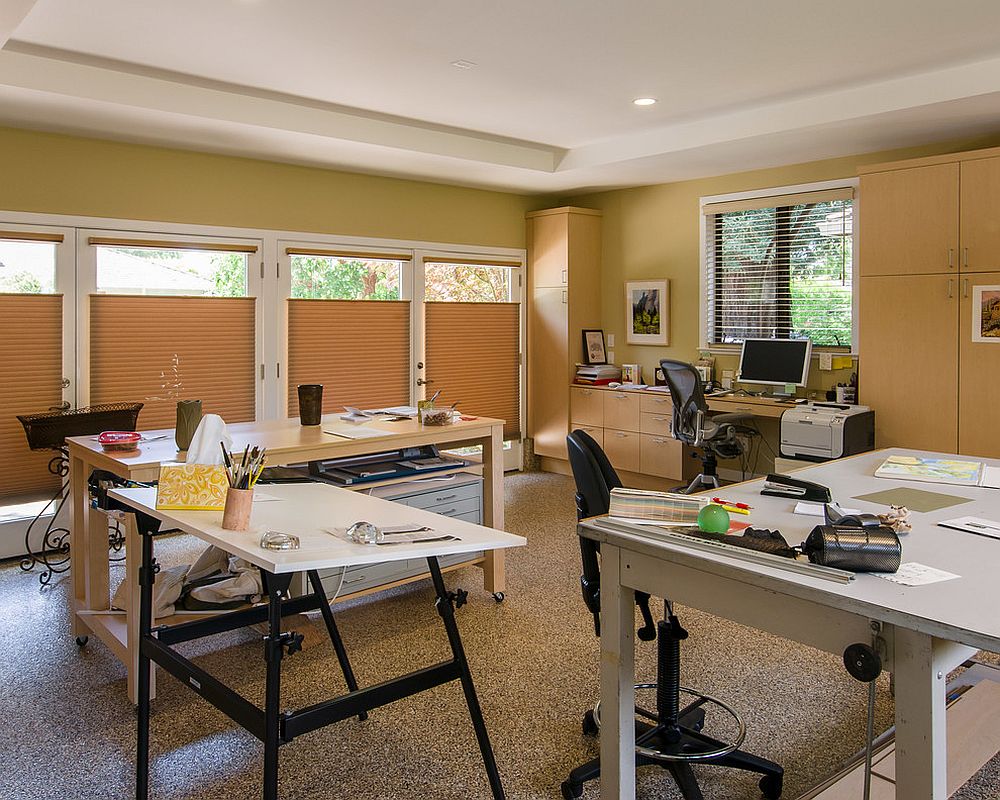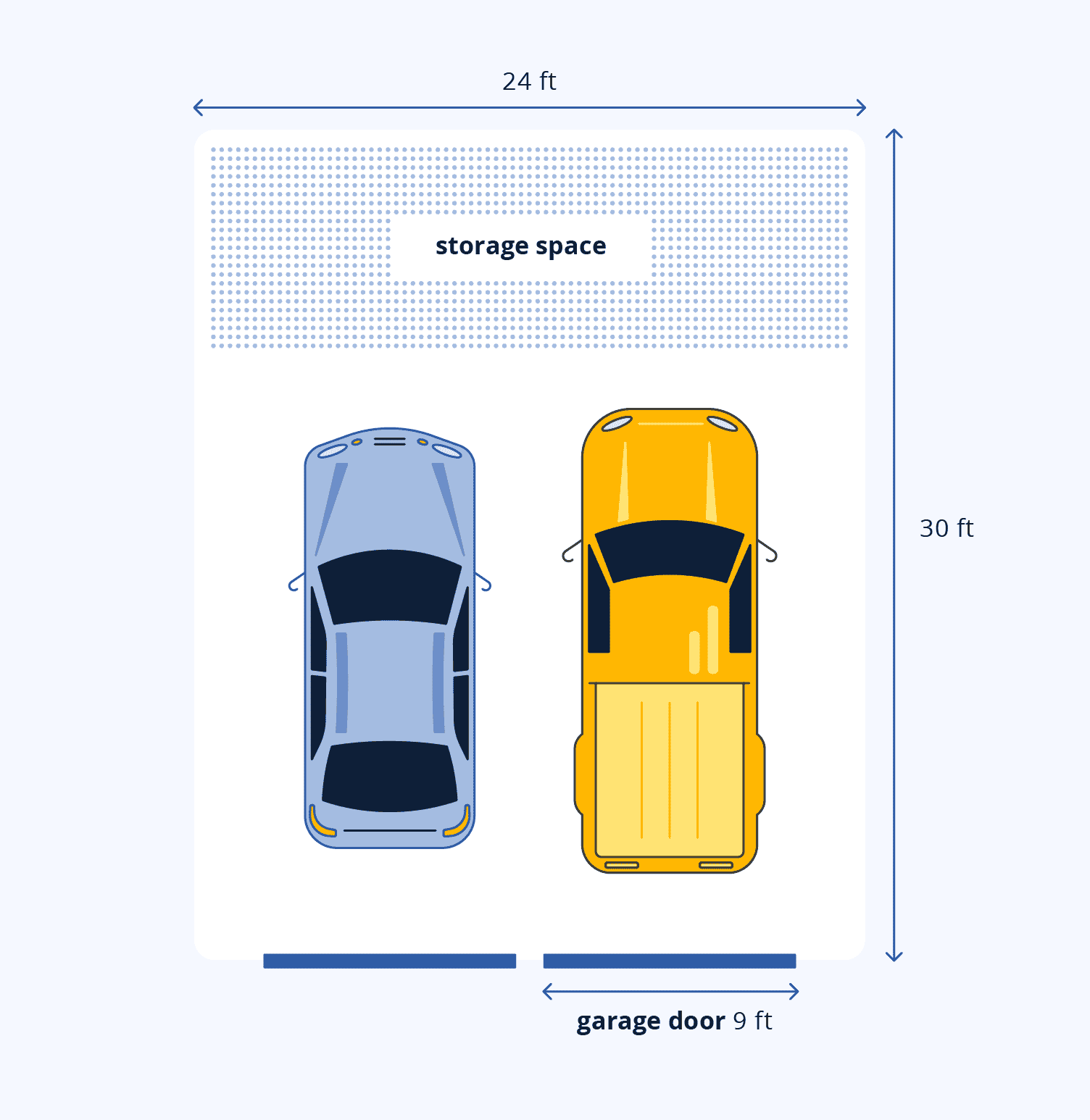
How Big Should a Garage Be to Comfortably Fit Two Family Vehicles?
When building or renovating a garage for a family with two vehicles, it’s essential to consider how much space you’ll need to park both cars comfortably and allow room for storage, movement, and other activities. The right garage size ensures that you can easily access your vehicles, open doors, and even incorporate storage or workspace without feeling cramped. In this article, we’ll look at the dimensions and factors to consider for a two-car garage that meets your needs.

Standard Dimensions for a Two-Car Garage
A standard two-car garage typically ranges from 20 feet by 20 feet to 24 feet by 24 feet, but the exact size depends on several factors, including the size of your vehicles, additional storage needs, and whether you’ll use the space for other activities. Here are some common garage dimensions and what they can accommodate:
- 6m by 6m
- This is generally the smallest recommended size for a two-car garage and can fit two compact cars snugly. However, maneuvering space will be limited, making it challenging to get in and out of your car, especially if you have larger family vehicles.
- 7m by 7m
- This slightly larger size provides a bit more room around the vehicles, which makes it easier to open doors and move around. It’s ideal if you’re parking two standard sedans or compact SUVs and may allow for a small amount of wall storage.
- 7.5m by 7.5m
- A 7.5m x 7.5m garage offers generous space for two vehicles, with room to spare for doors to fully open, and a small workbench or wall-mounted storage solutions for tools and equipment. This is an ideal choice for families with larger vehicles, such as SUVs or minivans, or those who require more room for storage.
- 7.5m x 8.5m
- If you have especially large vehicles, like large SUVs, or if you plan to use part of the garage for a workshop or additional storage, a garage larger than 7.5m x 7.5m may be a better option. This size also provides more comfort when moving between vehicles and allows for more extensive wall storage or built-in shelving.

Factors to Consider When Determining Garage Size
To decide on the best garage dimensions for your family, it’s important to consider your specific needs and preferences. Here are a few key factors to keep in mind:
Vehicle Size
- The length, width, and height of your vehicles are major considerations. For example, a standard sedan requires less space than a large SUV. Measure the dimensions of each vehicle, including the side mirrors and the space needed to open doors fully, to ensure your garage can comfortably accommodate both cars.
Storage Needs
- Most garages double as storage spaces, so think about what you need to store alongside your vehicles. Items like bicycles, lawn equipment, tools, and seasonal items can take up significant space. Consider incorporating slatwall panels, wall hooks, or ceiling storage to keep the floor clear while maximizing storage potential.
Room to Move and Access
- Having enough room to comfortably enter and exit your vehicles is essential. Plan for at least 90cm of clearance on each side of the cars for doors and maneuvering. Also, consider pathways to access the back of the garage, which will be useful if you store larger items like lawnmowers or snowblowers.
Additional Uses
- If you intend to use part of your garage as a workshop, gym, or hobby space, you may need additional square footage. In this case, a garage larger than 7.5m x 7.5m would be ideal, as it allows room for activities without obstructing vehicle access.
Future Flexibility
- Planning for future vehicle changes is wise. If you anticipate upgrading to a larger vehicle or adding items like motorbikes or recreational equipment, a larger garage will provide flexibility down the road.
Recommended Dimensions Based on Vehicle Types
To help you choose the best garage size, here are some recommended dimensions based on vehicle types:
- Two Compact Cars
- Minimum: 6m x 6m
- Recommended: 6.5m x 6.5m
- Two Mid-Sized Sedans
- Minimum: 6.5m x 6.5m
- Recommended: 7.5m x 7.5m
- One Mid-Sized Sedan and One SUV
- Minimum: 6.5m x 7.5m
- Recommended: 7.5m x 8m
- Two SUVs or One SUV and One Truck
- Minimum: 7.5m x 7.5m
- Recommended: 7.5m x 8.5m
For garages with additional storage or workspace needs, consider going up to 7.5m x 8.5m to ensure sufficient room for both cars and extra features.
Tips for Organizing a Two-Car Garage
Once you’ve chosen the right size for your garage, optimizing the space is the next step. Here are some tips to help you make the most of your two-car garage:
Utilize Wall Space
- Installing a slatwall system on one or more walls is an efficient way to store tools, sports equipment, and other items vertically. This setup keeps your belongings organized and off the floor, freeing up more room for vehicles.
Invest in Overhead Storage
- Ceiling storage racks are excellent for storing items you don’t use regularly, like seasonal decorations or camping gear. These racks take advantage of the high ceilings often found in garages and provide a convenient place for large, bulky items.
Add a Workbench or Utility Table
- If space allows, consider including a small workbench for DIY projects or repairs. Place it at the back of the garage or along a side wall where it won’t interfere with parking. Folding workbenches can also be an option for tight spaces, as they can be stored away when not in use.
Use Shelving for Bulk Storage
- Wall-mounted shelves are ideal for storing bins, boxes, and other bulky items. Opt for adjustable shelves to allow for flexible storage options as your needs change.
Designate Zones for Different Items
- Designating specific areas for tools, sporting goods, cleaning supplies, and other items can make it easier to stay organized. For example, place frequently used items close to the garage entrance or near the vehicles for quick access.
Final Thoughts: The Right Size for Your Needs
While a standard 6m x 6m garage may be sufficient for two compact cars, many families find that a slightly larger garage—such as 7.5m x 7.5m or larger—offers the convenience, storage, and flexibility they need. Considering your specific vehicle sizes, storage needs, and any additional uses for the space can help you choose the best garage dimensions for your family.
A well-planned garage size, along with efficient organization solutions like slatwall panels, overhead racks, and shelving, will ensure your space is comfortable, safe, and easy to use. Whether you’re building a new garage or updating an existing one, taking time to plan the right dimensions will make a difference in how functional and enjoyable the space is.
For top-quality organization tools and garage storage solutions, explore options at StoreWALL, where you’ll find durable slatwall systems, wall-mounted shelves, and a variety of accessories to help keep your garage organized and efficient.


